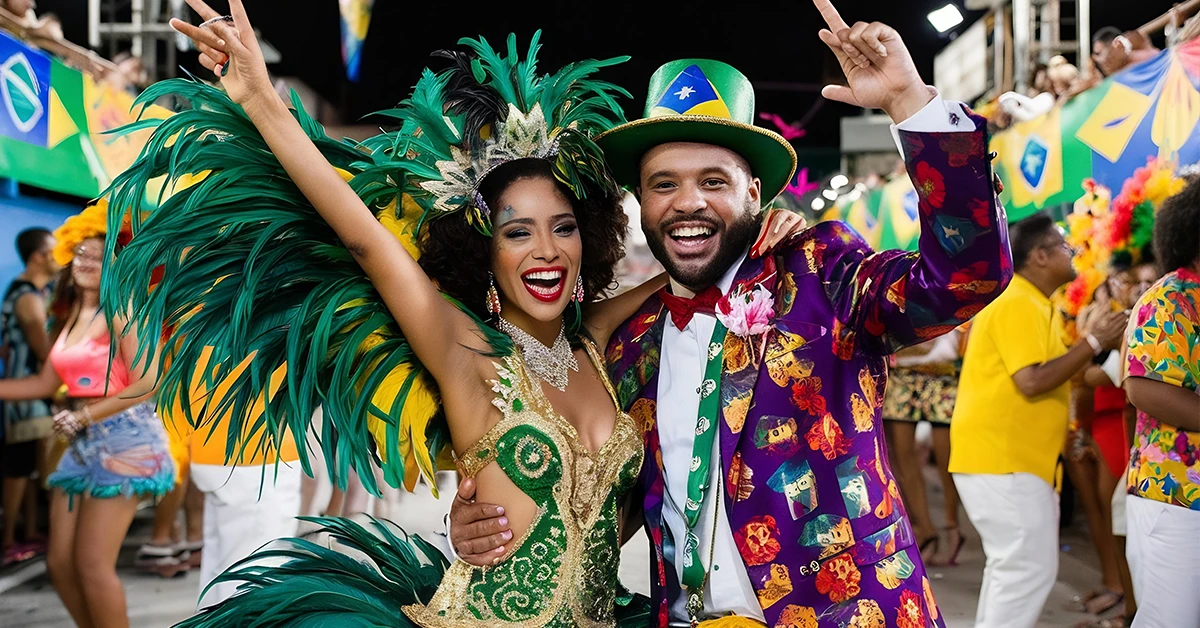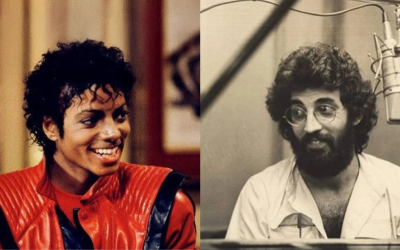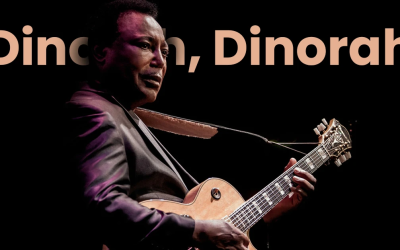The Rhythm of Resilience
The infectious beat of Brazilian samba today fills stadiums, captivates millions of television viewers worldwide, and generates billions in tourism revenue. Yet, this globally celebrated rhythm has a tumultuous past that few truly understand. What is now the heartbeat of Brazilian identity was once considered criminal activity, forcing its practitioners into hiding and subjecting them to police persecution.
This is the remarkable story of samba evolution – a journey from the margins of society to the center stage of global culture. It’s a narrative of resilience, cultural survival, and the complex relationship between art and commerce. As Alex Iervolino reveals in his insightful video about samba schools, the dedication we see today – where musicians practice until their hands bleed – is rooted in generations of struggle and an unbreakable connection to cultural identity.
Understanding this transformation is crucial to appreciating the profound commitment of today’s samba practitioners and the paradoxical nature of modern carnaval commercialization.
The Roots of Repression: Samba’s Dangerous Beginnings
Brazilian samba history begins in the late 19th and early 20th centuries, emerging from the Afro-Brazilian communities of Rio de Janeiro. Born in neighborhoods like Saúde, Gamboa, and Santo Cristo – areas known as “Pequena África” (Little Africa) – samba expressed the culture of formerly enslaved people and their descendants.
These communities gathered in informal circles called rodas de samba, where African rhythms blended with European harmonies and indigenous influences. These weren’t just musical gatherings; they were spaces of cultural preservation, social connection, and resistance against societal erasure of Afro-Brazilian identity.
However, the ruling white elite viewed these expressions with suspicion and hostility. Samba was associated with “vadiagem” (vagrancy), disorder, and criminality. The Brazilian Republic, established in 1889, was obsessed with “civilizing” the country according to European standards. They viewed Afro-Brazilian cultural manifestations as obstacles to progress.
Police raids on “rodas de samba” were routine. Practitioners faced arrest under vagrancy laws, and their instruments were confiscated. The very act of playing samba could result in imprisonment. This period of samba repression forced the music underground, where it survived through the sheer determination of its practitioners.
The irony is striking: what Brazil now proudly exports as its cultural ambassador was once considered a threat to social order.
The Underground Years: Survival Through Community
Despite intense persecution, samba thrived in the homes, backyards, and hidden spaces of its devotees. The rodas de samba became acts of cultural resistance, preserving not just music but an entire way of life, storytelling tradition, and community structure.
Key figures emerged during this period, including Tia Ciata, whose home in Rio’s Praça Onze became a legendary meeting place for samba musicians. These gatherings were carefully orchestrated to avoid police attention – respectable parties in the front rooms while the real samba happened in the back.
The samba cultural impact during this underground period was profound. It created a network of cultural preservation that transcended individual persecution. Musicians, composers, and dancers developed a collective identity that would prove crucial to samba’s eventual legitimization.
This clandestine period also fostered the innovation and creativity that would later captivate the world. Freed from commercial constraints but bound by the need for cultural survival, early samba developed its distinctive characteristics: the complex polyrhythms, the call-and-response vocals, and the communal spirit that defines it today.
The Turning Tide: From Persecution to Recognition
The transformation of samba from banned music to accepted cultural expression didn’t happen overnight. It was a gradual process influenced by changing social attitudes, political calculations, and economic opportunities.
The first significant shift occurred in the 1920s, as some intellectuals and artists began recognizing the artistic value of Afro-Brazilian culture. The Semana de Arte Moderna (Modern Art Week) of 1922 in São Paulo contributed to a broader cultural awakening. While primarily focused on other art forms, it would eventually benefit samba.
More importantly, politicians began to see the popular appeal of samba and its potential for social control and national identity construction. The music once seen as a threat to social order became viewed as a tool for creating uniquely Brazilian identity.
The establishment of the first samba schools in the late 1920s and early 1930s was crucial to this transformation. Schools like Deixa Falar (1928), Mangueira (1928), and Portela (1935) provided organized frameworks for samba. They moved it from informal gatherings to structured community organizations.
These early samba schools were more than musical groups; they were social institutions providing identity, belonging, and cultural continuity. They began organizing formal parades, creating the foundation for what would become the modern Carnaval competition.
The State’s Embrace: Samba as National Symbol
The definitive turning point in Brazilian samba history came during the Estado Novo regime (1937-1945) under President Getúlio Vargas. Recognizing samba’s immense popular appeal, Vargas’s government embarked on a strategic campaign to co-opt and control this cultural expression.
This wasn’t born from genuine appreciation for Afro-Brazilian culture, but rather from political pragmatism. Vargas needed to build national unity and legitimacy, and samba offered a powerful tool for creating a shared Brazilian identity that transcended regional and class differences.
The government began providing official support to samba schools, organizing formal competitions, and promoting Carnaval as a national festival. Radio stations, previously reluctant to play samba, were encouraged to broadcast it. The music that had once been played in secret was now being promoted by the state.
However, this embrace came with conditions. Samba themes were often influenced by government narratives, promoting nationalism, work ethic, and social harmony. The spontaneous, rebellious spirit of early samba was gradually channeled into more controlled, officially sanctioned expressions.
This period marked the beginning of samba evolution from grassroots cultural expression to organized spectacle, setting the stage for its eventual commercialization.
The Birth of Big Business: Carnaval’s Commercial Revolution
The mid-20th century witnessed the dramatic transformation of Carnaval from community celebration to massive commercial enterprise. This carnaval commercialization process accelerated as Brazil’s economy grew and tourism became increasingly important.
The construction of the Sambodrome in Rio de Janeiro in 1984, designed by renowned architect Oscar Niemeyer, symbolized this transformation. This purpose-built stadium converted the street parade into a ticketed event, capable of accommodating 90,000 spectators and generating substantial revenue.
The numbers are staggering: modern Rio de Janeiro samba schools operate with annual budgets that can exceed $1 million. The Carnaval industry generates billions in economic activity, from hotel bookings and restaurant sales to costume production and media rights.
Major corporations sponsor samba schools, television networks pay millions for broadcast rights, and international tourists flock to Brazil specifically for Carnaval. What began as informal community gatherings has become one of the world’s largest cultural industries.
This commercialization brought resources, global recognition, and professional opportunities. Samba schools could afford elaborate floats, sophisticated costumes, and year-round operations. The art form reached unprecedented levels of sophistication and spectacle.
The Paradox of Success: Passion in a Commercial World
Yet, as Alex Iervolino powerfully illustrates in his video, a profound paradox lies at the heart of modern samba. Despite generating enormous revenues, the vast majority of participants – the 300 musicians in each bateria, the thousands of dancers, the costume makers – are unpaid volunteers who often pay to participate.
This contradiction reveals the persistent samba cultural impact that transcends commercial considerations. For these dedicated individuals, participation isn’t about financial gain but about community belonging, cultural identity, and an unbreakable connection to their heritage.
The ritmistas who practice until their hands bleed, the seamstresses who work year-round on costumes, the choreographers who design complex routines – they are driven by the same spirit that sustained samba through its years of persecution. Their motivation is cultural, not commercial.
This paradox also highlights ongoing inequalities in Brazilian society. While Carnaval generates enormous profits, many of these benefits don’t reach the communities where samba originated. The carnaval commercialization has created a complex relationship between cultural authenticity and economic exploitation.
Global Recognition and Cultural Export
Today’s Brazilian samba is a global phenomenon. Its rhythms have influenced countless musical genres worldwide, from jazz and bossa nova to contemporary pop music. Samba schools tour internationally, Brazilian percussion workshops are popular globally, and Carnaval has inspired celebrations in cities from London to Tokyo.
This global reach represents the ultimate vindication of a cultural expression that was once considered criminal. The music that police once suppressed is now a source of national pride and international soft power for Brazil.
UNESCO’s recognition of samba as an Intangible Cultural Heritage of Humanity in 2005 officially acknowledged what practitioners always knew. Samba is not just entertainment but a vital cultural tradition deserving protection and celebration.
The transformation from banned music to tourist gold is complete. However, the journey reveals important truths about cultural resilience, community power, and the complex relationship between art and commerce.
The Enduring Spirit: More Than Commercial Success
Despite its commercial success, the essence of Brazilian samba remains rooted in its communities and its history of resistance. The samba schools, while now massive organizations competing for titles and sponsorships, still function as cultural and social hubs in their neighborhoods.
They continue to be places where traditions are passed down through generations, where community bonds are strengthened, and where the authentic energy of samba thrives. The rodas de samba still exist, maintaining the informal, communal spirit that gave birth to this remarkable art form.
The dedication Alex describes in his video – the bleeding hands, the months of unpaid rehearsal, the profound commitment to perfection – is a direct continuation of the spirit that sustained samba through persecution. It’s a testament to the power of cultural identity to transcend commercial considerations.
Lessons from Samba’s Journey
The story of samba evolution offers valuable lessons about cultural resilience, the power of community, and the complex dynamics of commercialization:
Cultural Survival: Samba’s survival through persecution demonstrates the incredible power of community commitment to cultural preservation.
Transformation and Adaptation: The evolution from underground expression to global phenomenon shows how cultural forms can adapt while maintaining their essential character.
The Double-Edged Sword of Success: Commercial success brings resources and recognition but also risks commodification and loss of authenticity.
Community vs. Commerce: The ongoing dedication of unpaid participants reveals that some motivations transcend financial considerations.
Conclusion: The Rhythm Continues
The journey of Brazilian samba from banned music to tourist gold is one of the most remarkable cultural transformations in modern history. It’s a story of resilience, adaptation, and the enduring power of community spirit.
Today, when millions watch the spectacular parades in the Sambodrome, they’re witnessing not just entertainment but the culmination of a century-long struggle for cultural recognition and survival. The bleeding hands Alex describes in his video are connected to the calloused hands of earlier generations who kept samba alive through persecution.
The transformation is complete, but the journey continues. Samba remains a living, evolving cultural expression, forever balancing its commercial success with its community roots, its global reach with its local identity. It’s a rhythm that refused to be silenced, and today, it makes the whole world dance.
References
- What’s the REAL Secret to Brazil’s Unbeatable Samba Schools? – The Stringuy, YouTube Channel. Available at: https://youtu.be/brEpAfhgqX8
- Vianna, Hermano. “The Mystery of Samba: Popular Music and National Identity in Brazil.” University of North Carolina Press, 1999. Available at: https://www.amazon.com/Mystery-Samba-Popular-National-Identity/dp/0807847666?ref_=nav_custrec_signinhttps://uncpress.org/book/9780807847725/the-mystery-of-samba/
- McCann, Bryan. “Hello, Hello Brazil: Popular Music in the Making of Modern Brazil.” Duke University Press, 2004.
- Crook, Larry. “Brazilian Music: Northeastern Traditions and the Heartbeat of a Modern Nation.” ABC-CLIO, 2005.
- G1 Carnaval. “A história do samba e do carnaval.” Available at: https://g1.globo.com/df/distrito-federal/carnaval/2025/noticia/2025/03/01/origem-do-carnaval-entenda-como-surgiu-festa-que-virou-tradicao-e-marca-registrada-do-brasil.ghtmlhttps://g1.globo.com/carnaval/noticia/2019/03/04/a-historia-do-samba-e-do-carnaval.ghtml
- UNESCO. “Samba de Roda of Recôncavo of Bahia.” Available at: https://ich.unesco.org/en/RL/samba-de-roda-of-reconcavo-of-bahia-00101





